Louvre Museum, the core of the european art world ( part 3 )
The French and Italian masters
This is the 3rd part of my storytelling about Museum Louvre. As I already told you before in the previous articles, this museum is the largest of this kind in the world, so maybe that is why I've been writing so much about it.
In the following words I will pick up the story from where I left it in the previous article. After the Northern Europe galleries located on the second floor, our main aim was to see the famous and well-known "Monalisa" belonging to the italian artist Leonardo Da Vinci.
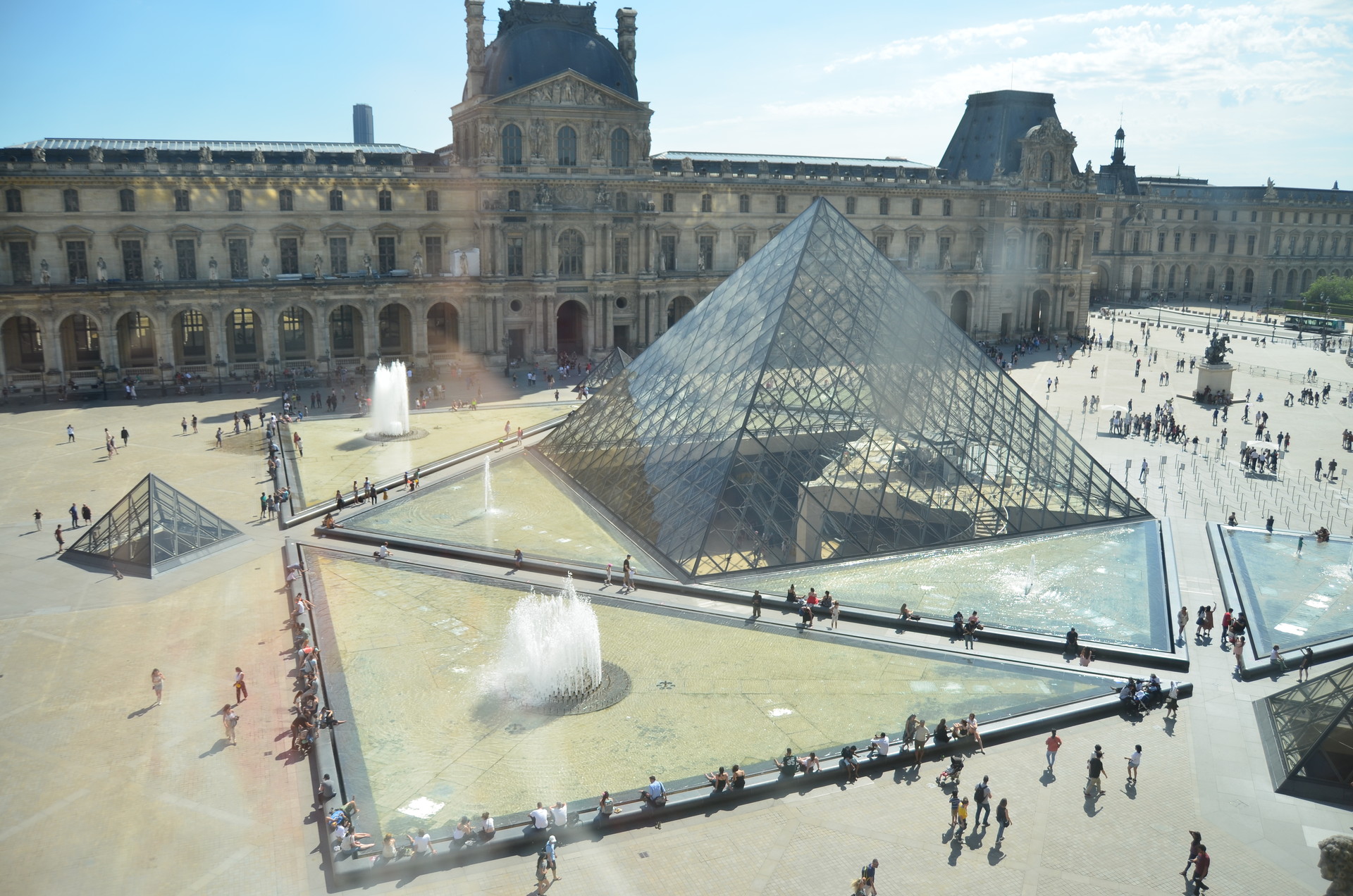
Searching for "The Monalisa"
We searched on our map the place where the painting was displayed and found out that we had to go to Level 1 in the Denon wing and enter the room 711 to admire it. From the Richelieu Wing where we were at that time we had to find our way until this other part of the huge museum. We realised that "The Monalisa" was actually standing in the opposite wing that we could see from the hallway's windows.
The problem we faced it was due to time, because it was getting late which meant that the museum would have close pretty soon. There was really no time to lose or to think more. We went down the stairs to Level 1 and then walked our way until The Denon wing passing very quickly through everythings else, but stopping for a bit when we were noting something interesting and worth looking at.
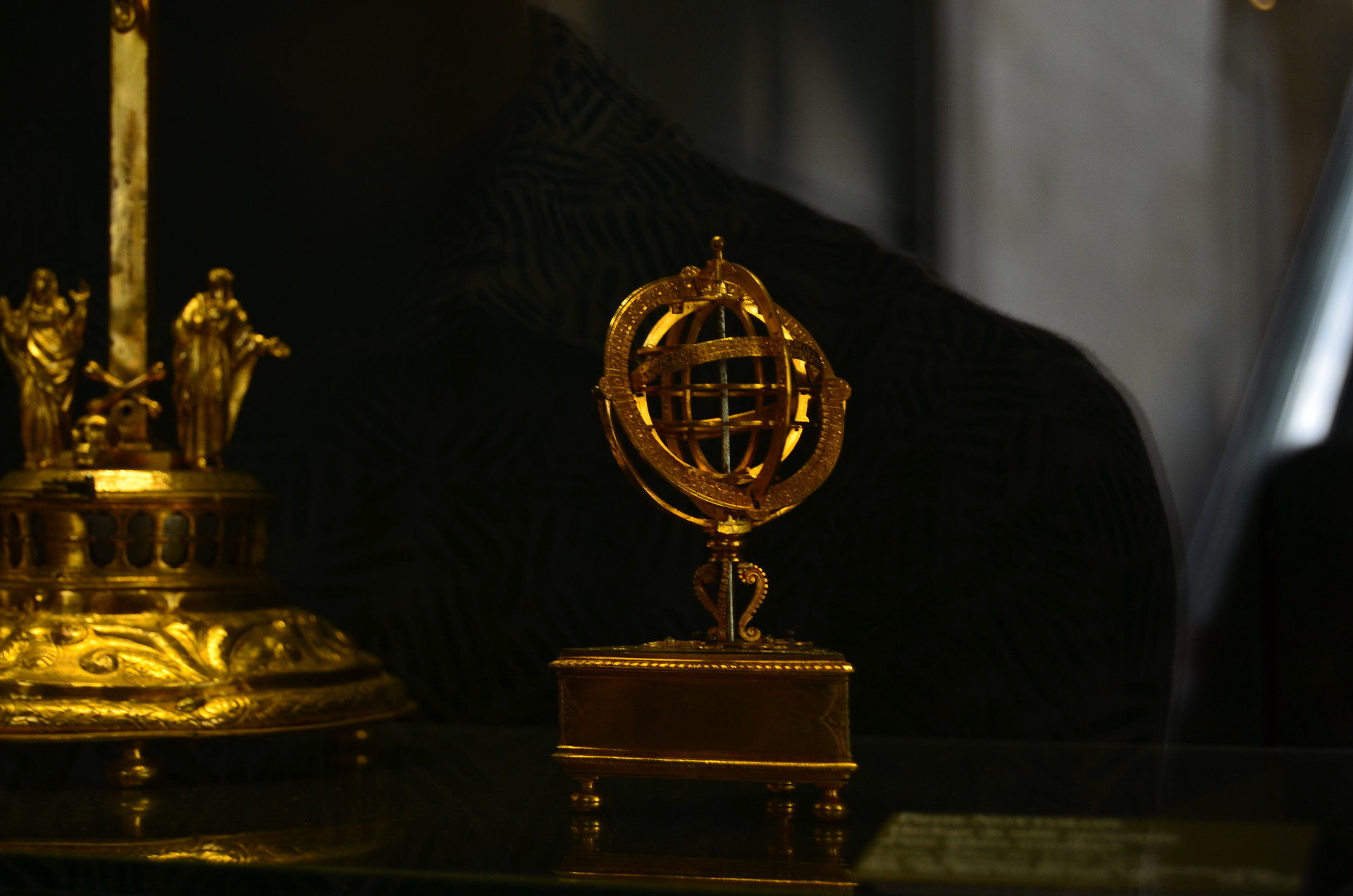

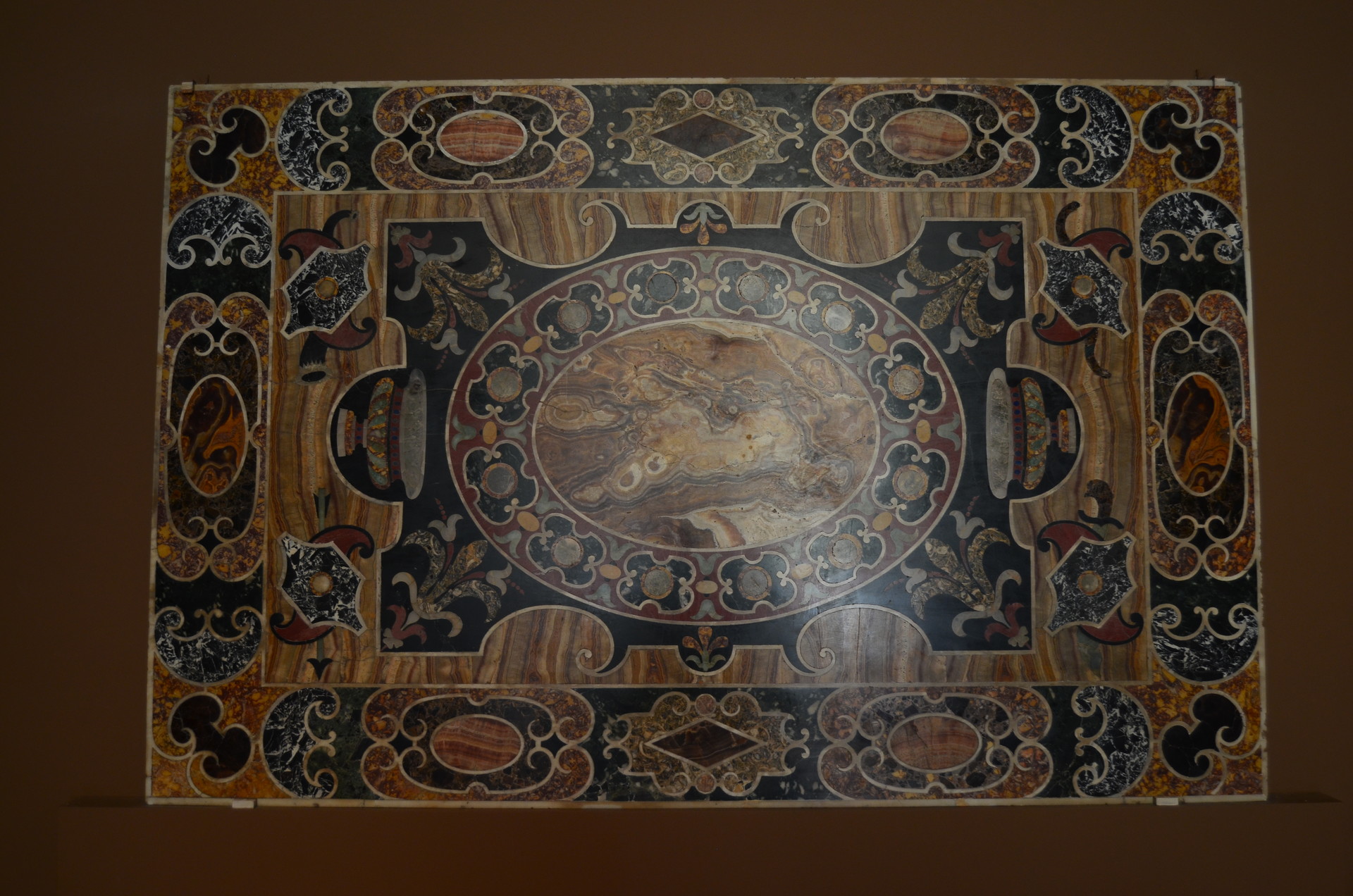
We followed our way leaving behind the Decorative Arts of Europe collections, The Pavillon de l' Horloge, The Galerie d'Apollon/ The French Crown Jewels until we got to the long Denon wing. We knew that we were on a right path because guiding signes showing the way to "The Monalisa" started to appear, so we forgot about our map and instead follow those.
Soon we had reach The room 711, a place dedicated entirely to the italian artist and his "Gioconda". Of course, there were many people in this room who were trying to get in front of the other people to see the painting better. Well, actually what everybody wanted to do was to take photos of it, just a few persons were really paying attention to the artwork.
This behavior annoyed me so much and also remembered me about a similar situation that I encountered in Musee d'Orsay when I could not watch Vincent van Gogh's "Autoportrait" because of the many people who were more concern of taking photos or selfies with it then truly admiring the masterpiece exhibited in front of their eyes.

Anyway, it was quite difficult to observe this painting also due to the fact that the viewers cannot approach it, a distance of about 2-3 meters being kept between the work and the visitors. Plus, for its safety, the artwork was protected by a glass window.
We've been knowing the aspect of " The Gioconda" since a long time and got used to her by seeing the reproduce image of the painting everywhere on the Internet, in books, on various panels, produces and I supposed that because of this fact our excitement and happiness by being in the same room with the famous painting was kind of lacking. But still, we tried to have a conversation about it by analyzing the painting from a rational point of view.
Why "Gioconda" was so great? The main figure of Da Vinci's artwork was a female depicted in an outside landscape. She was standing with her arms crossed looking with her body and eyes directly at the viewer. There had been painted lots and lots of images like this since the Early Renainssance to today, but "The Monalisa" became the most successful of one, why? Without searching on the Internet why this happened - because for sure I would came across a few conspiracy theories - , I thought that the way in which Leonardo created the painting contributed to the greatness of his overly appreciated masterpiece.
As far as I knew, the italian artist worked at his painting many years in a row until he reached the finished version of it. Da Vinci developed a painting technique called "sfumato", a thorough manner which consisted in shaping the represented elements of the image such as the faces or hands by making extremly smooth and fine passes from light to shadow. By doing like so, his figures became full of life and very realistic. Indeed, a proof of this fact was " The Monalisa".
The French Romantic painters
We were left with some time after seeing Leonardo Da Vinci's greatest work and we continued our visit to what was left to see in this part of the museum, namely The France and The Spanish collections.
Going to the large hallway like gallery, we got surprised by three huge paintings, that I've already knew and learned about, because we didn't expected to find these exhibited in The Louvre Museum.
Théodore Géricault
Le "Radeau de la Méduse" originally titled "Scène de Naufrage" was an oil painting created by the French Romantic artist Théodore Géricault which had became a landmark of the French Romanticism. The over sized paintings illustrated a moment from the wreck of the French naval frigate "Medusa". The painter caught a moment when some people were trying to save themselves while others were about to die from injuries or drowning. The scene was dramatic and painful to look at.
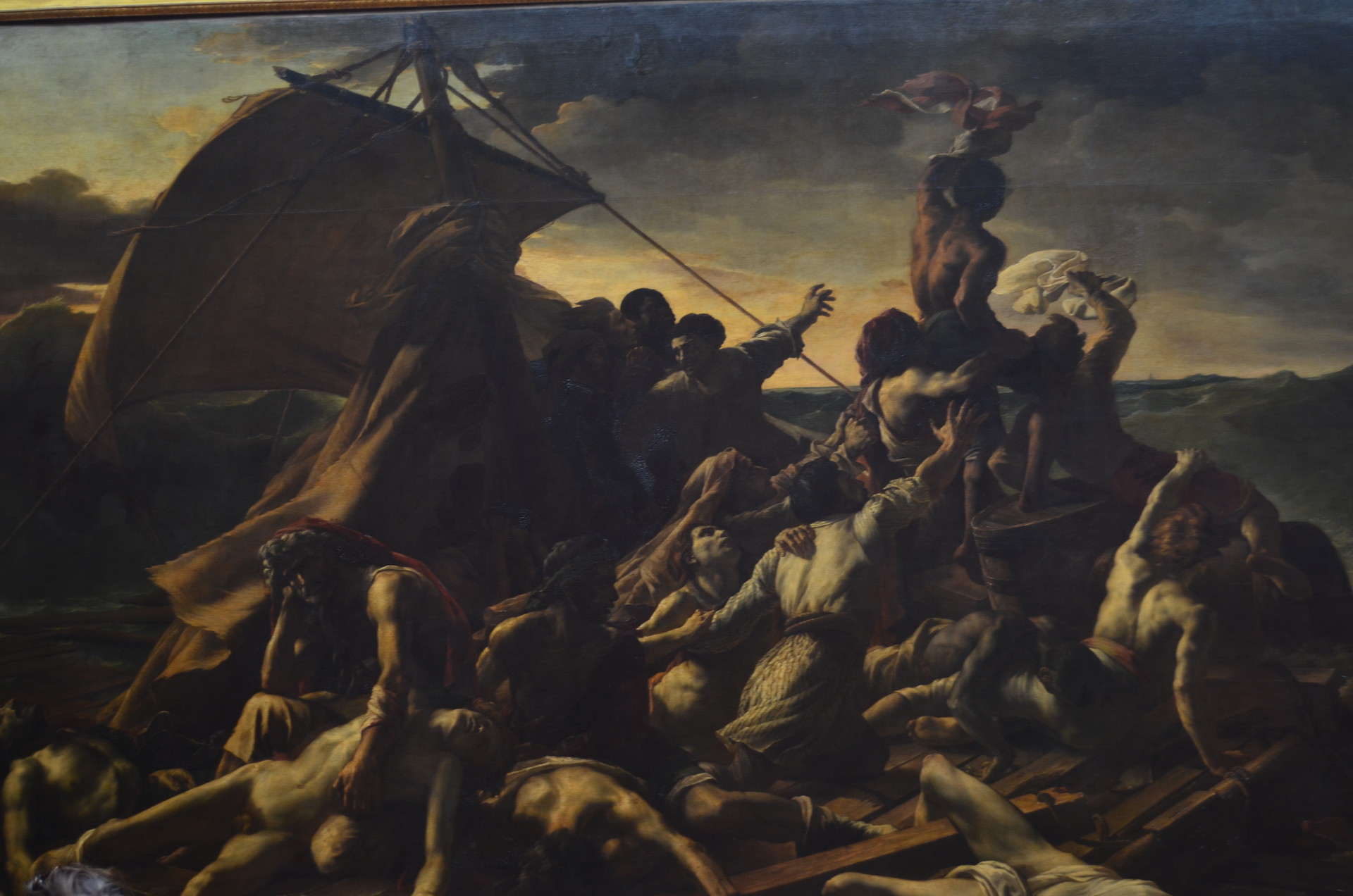
The overall image was that of the human pyramid, a specific compositional characteristic of Romanticism. At that time, "The Raft of the Medusa" was a manifestation of this tendency. The painting managed to convey very well the feelings of the characters: the approach of death, the pain, the strength to overcome the destiny of survival.
Eugene Delacroix
A painter who became actively involved in his contemporary events was Delacroix, and in this sense in 1830 he painted the work "Liberty leading the people".
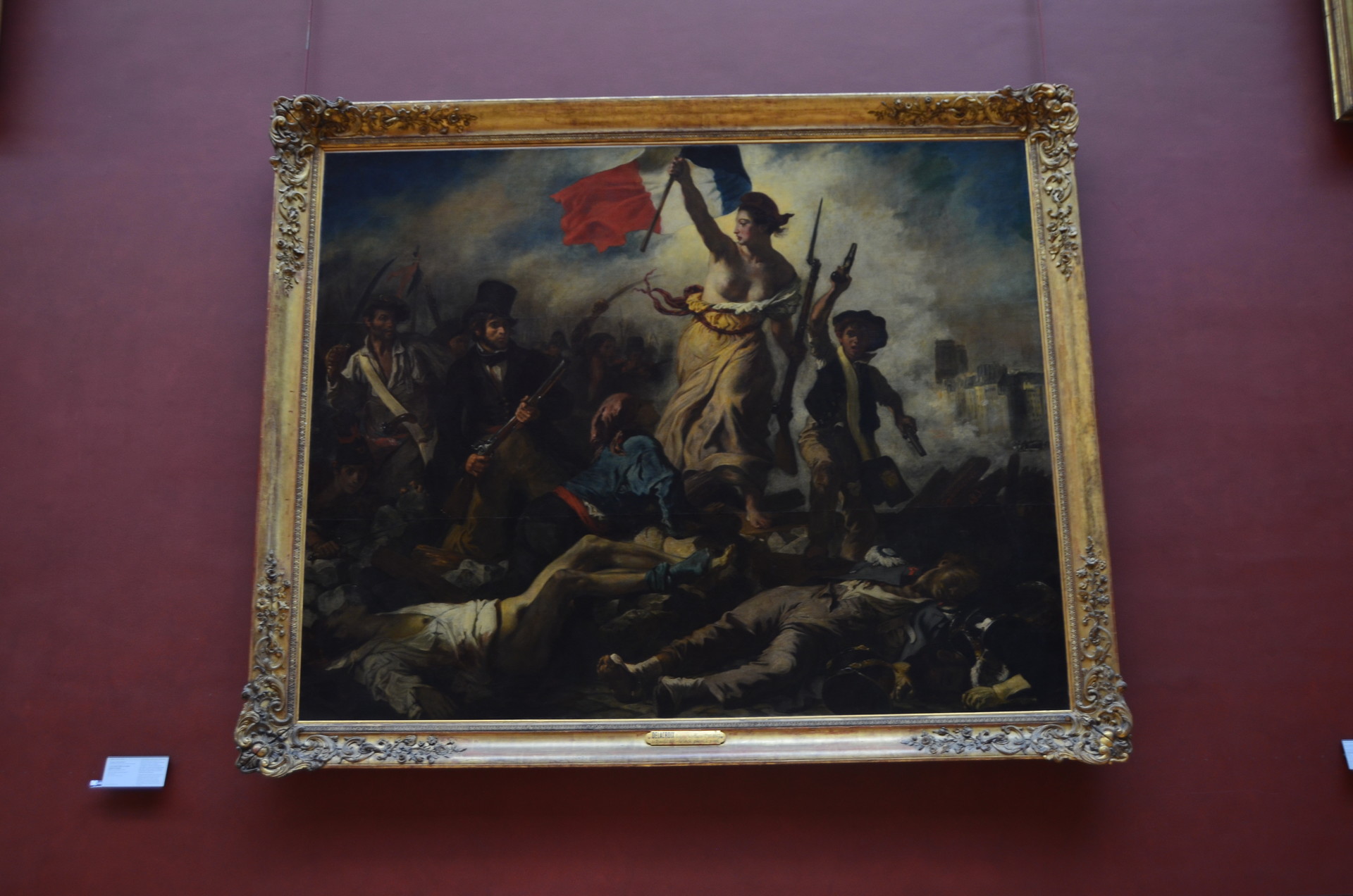
The painter represented an allegorical scene in which freedom is symbolized by France. The woman carrying the flag of the country guided the revolutionaries to walk forward over the bodies of the fallen until they reached the final victory. Delacroix was also portrayed in the right side of the work being dressed according to the fashion of the time with joben and holding a rifle in his hand. Another symbolic character for the revolution painted here was Gavroche.
Another over life sized painting that we had the opportunity to see in The Denon Wing of the Louvre was painted also by Delacroix and named "The Death of Sardanapalus". The aspect that attracted us in front of this work was the playful range of colours used by the painter to create the chaos of the scene as well as the small expressive details.
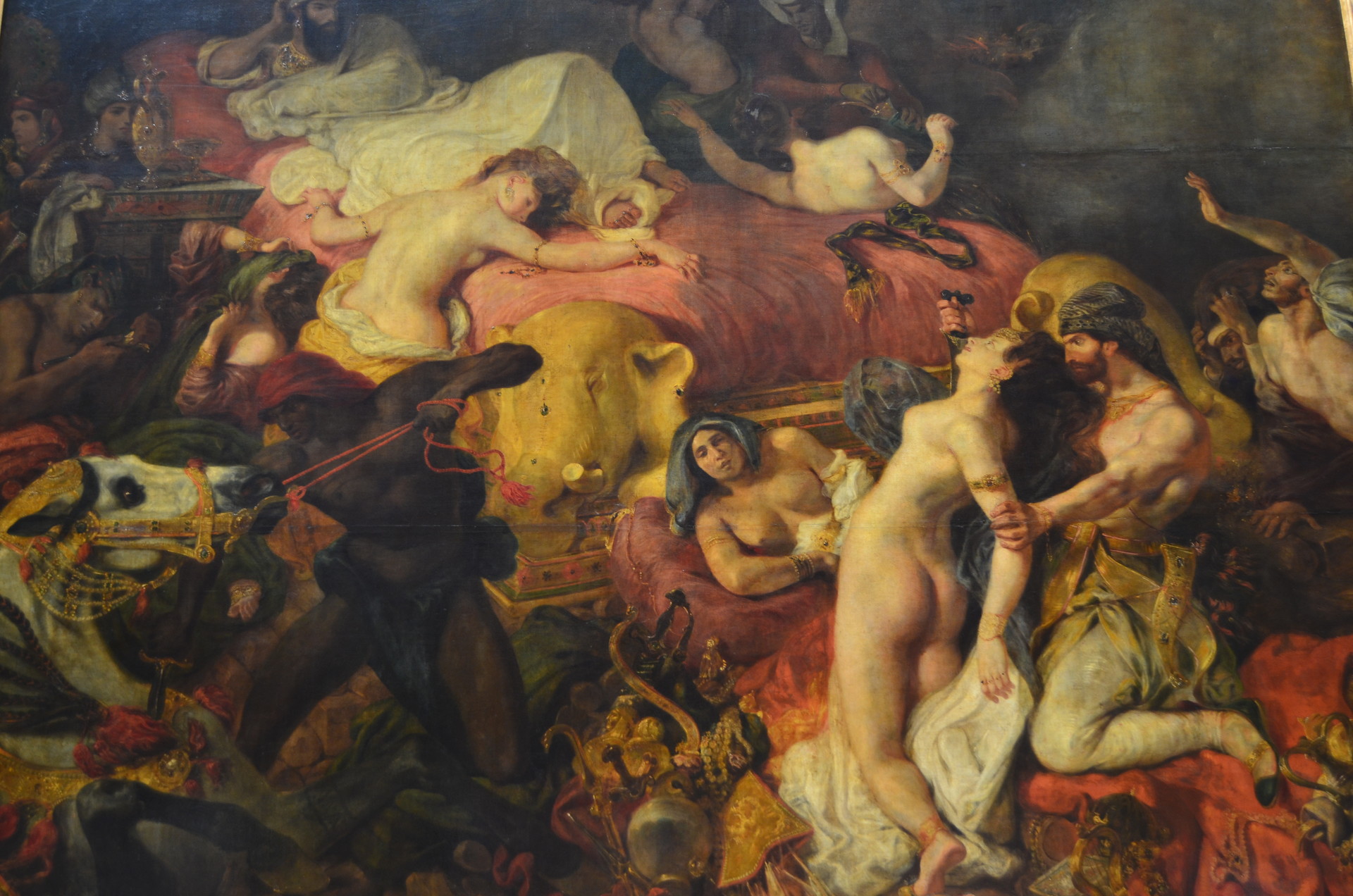
Getting kicked out from the Louvre
Finally, we could not get to see the paintings of Spain because the museum was closing and the employees did not let us pass, but instead they guided us to the exit, but we didn't get out immediatly because the museum's shop was still open and we spend some time here searching or buying beautiful souvenirs for friends, family and for ourselfes.
Recommandations when visiting the world's largest art museum
The Louvre Museum was indeed huge and because we arrived there in the afternoon we didn't had enough time to see everything that we wanted.
For the future visitors of this museum, we advised the following:
- go to the museum earlier or chose a day when it is open until 21:45 ( Wednesday and Friday )
- take the map offered by the museum and look over it before starting to visit
- if you don't have enough time, then mark on the map the things that you would like to see and go there first
- be patient with yourself and with the other people
- ask for indication if you think you are getting lost
